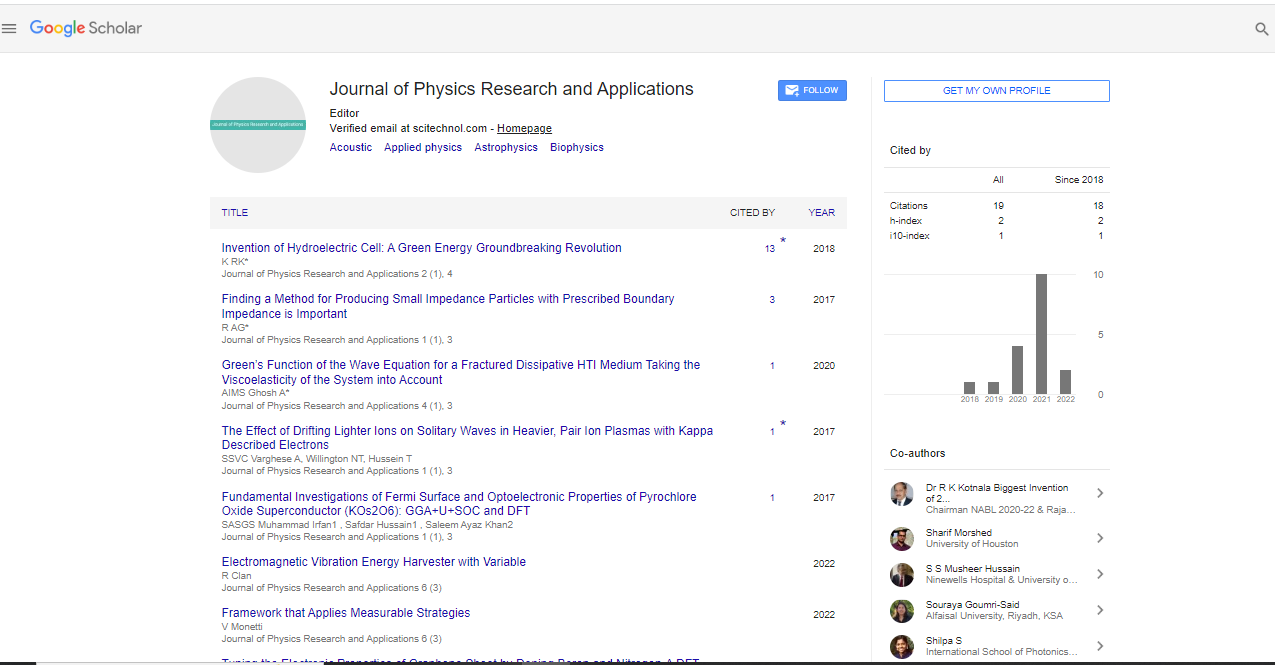Commentary, J Phys Res Appl Vol: 8 Issue: 2
Quantum Metrology: Enhancing Measurement Precision through Quantum Mechanics
Laura Cristina*
1Department of Physics, Ewha University, Seoul, South Korea
*Corresponding Author: Laura Cristina,
Department of Physics, Ewha University,
South Korea
E-mail: laura@ybn.kr
Received date: 21 May, 2024, Manuscript No. JPRA-24-140075;
Editor assigned date: 23 May, 2024, PreQC No. JPRA-24-140075 (PQ);
Reviewed date: 07 June, 2024, QC No. JPRA-24-140075;
Revised date: 14 June, 2024, Manuscript No. JPRA-24-140075 (R);
Published date: 21 June, 2024 DOI: 10.4172/JPRA.1000103.
Citation: Cristina L (2024) Quantum Metrology: Enhancing Measurement Precision through Quantum Mechanics. J Phys Res Appl 8:2.
Description
Quantum metrology is an emerging field working on the principles of quantum mechanics to achieve unprecedented precision in measurements. By exploiting phenomena such as quantum entanglement, superposition and squeezing, the quantum metrology promises to revolutionize various scientific and technological domains. Quantum metrology utilizes the unique properties of quantum states to surpass the limitations of classical measurement techniques. Traditional measurements are constrained by the so-called "Standard Quantum Limit" (SQL), which arises from the inherent noise associated with classical systems. Quantum metrology, however, can reach and even surpass the "Heisenberg limit," which is the ultimate boundary for measurement precision dictated by quantum mechanics. Key to this advancement is the use of quantum entanglement. When particles become entangled, the state of each particle is intrinsically linked to the state of the other, regardless of the distance separating them. This correlation allows for more accurate measurements of quantities such as time, frequency, and spatial dimensions. Superposition, another quantum property, enables particles to exist in multiple states simultaneously, providing additional pathways for enhancing measurement precision.
Quantum squeezing further reduces measurement noise. In a squeezed state, the uncertainty of one measurement variable is reduced at the expense of increased uncertainty in the conjugate variable. This allows for more precise measurements of quantities like position or momentum, important for applications in fields ranging from gravitational wave detection to atomic clocks. One of the most prominent applications of quantum metrology is in the development of ultra-precise atomic clocks. These clocks, which use the vibrations of atoms as their timekeeping mechanism, are essential for Global Positioning Systems (GPS), telecommunications, and scientific research. Quantum entanglement can significantly enhance the accuracy of these clocks, leading to better synchronization of time across various platforms and improving the reliability of timesensitive technologies.
Quantum metrology also plays a critical role in enhancing the sensitivity of gravitational wave detectors. Devices such as LIGO (Laser Interferometer Gravitational-Wave Observatory) detect ripples in spacetime caused by massive astrophysical events like black hole mergers. By employing quantum squeezed states, these detectors can reduce noise and improve their ability to observe these minute disturbances, thereby advancing our understanding of the universe.
In the field of healthcare, quantum metrology can revolutionize medical imaging and diagnostics. Techniques such as quantumenhanced Magnetic Resonance Imaging (MRI) and Positron Emission Tomography (PET) can provide higher resolution images with lower doses of radiation. This improvement can lead to earlier detection of diseases and more accurate monitoring of medical conditions, significantly impacting patient outcomes. Quantum sensors, another application of quantum metrology, are being developed for a wide range of uses, from detecting minute changes in magnetic and electric fields to measuring gravitational forces with extreme precision. These sensors have potential applications in geological surveying, navigation, and even fundamental physics experiments that probe the nature of the universe at the smallest scales. The future of quantum metrology is bright, with on-going research continually.
One significant challenge is the development of practical and scalable quantum systems. While laboratory demonstrations have shown the feasibility of quantum-enhanced measurements, translating these results into commercially viable products requires overcoming technical hurdles such as maintaining quantum coherence and mitigating environmental noise. Advances in quantum control and error correction are essential to address these issues. Another challenge lies in the integration of quantum metrology into existing infrastructure. Industries and research institutions must adapt to incorporate quantum technologies, which may involve substantial investment in new equipment and training for personnel. Collaboration between academia, industry, and government agencies will be important to facilitate this transition and ensure that the benefits of quantum metrology are widely accessible.
 Spanish
Spanish  Chinese
Chinese  Russian
Russian  German
German  French
French  Japanese
Japanese  Portuguese
Portuguese  Hindi
Hindi 
